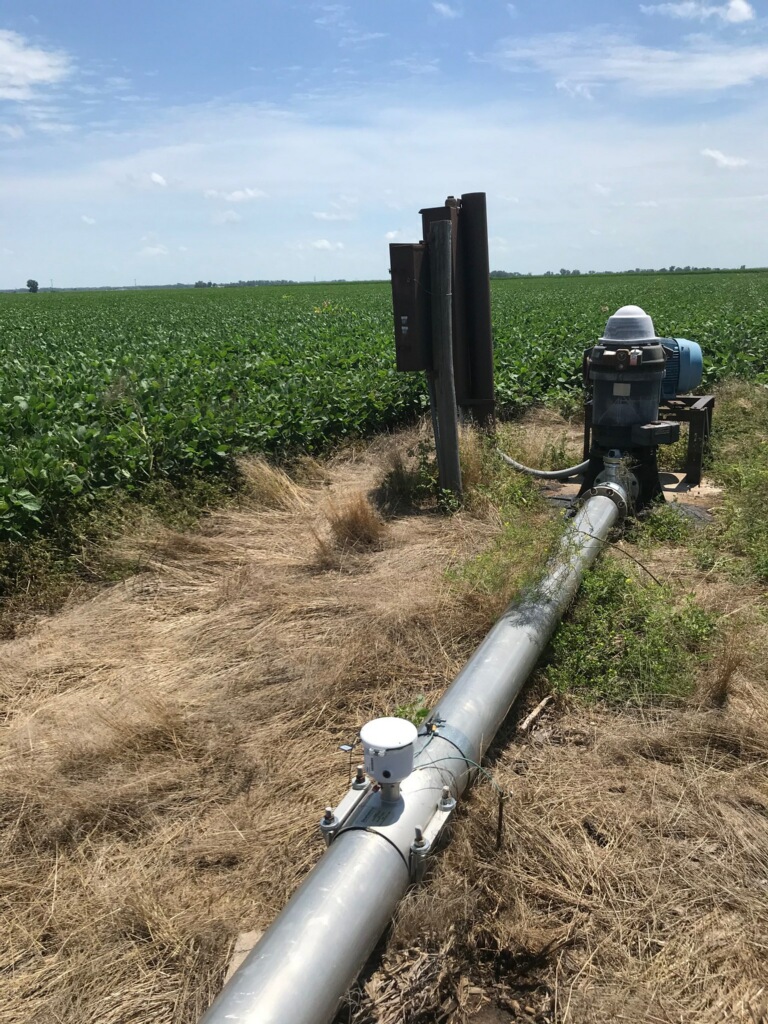This article appears in the August 2021 issue of Potato Grower.
Smart irrigation practices include using precise irrigation tools and good irrigation management decisions for proper irrigation scheduling.
Irrigation scheduling is the process of applying water to crops at the exact frequency and amounts needed. It involves studying, understanding, applying, then monitoring and controlling essential instruments such as soil moisture probes and flow meters to ensure efficient use of energy and water in crop production is achieved. Proper irrigation scheduling minimizes the waste of water and nutrients, supporting conservation while maximizing crop yields. How do you know when to apply water? How do you know how much water to apply? You can’t manage what you don’t measure, making the flow meter an integral component of an efficient irrigation system.
 Following are three important reasons using an irrigation flow meter is a smart business practice:
Following are three important reasons using an irrigation flow meter is a smart business practice:
-
Improve crop quality and increase yields
You can’t manage what you don’t measure. Today, virtually every input on a farm is measured—from electricity used to fertilizer and pesticides applied. Even runoff is typically measured. It only makes sense to measure how much irrigation water is used. Using the right amount of water on the field at the right time and in the right place can improve crop quality, reduce energy and fertilizer costs, minimize topsoil erosion and increase yields.
-
Determine pump efficiency and quickly identify irrigation system problems to save money
Any time the pump is on, water is moving and costs are being incurred. Where variable speed drives are used, associated costs can include both fuel and electricity. As a management tool, a flow meter can help an irrigator find the best efficiency point for his or her system, in turn saving fuel and ensuring the pump is running at an RPM level that will maximize its life expectancy and save money on costly pump repairs, fuel and/or electricity. In addition to pump efficiency, a flow meter can be used as a system diagnostic tool, and tell growers critical information about the health of their irrigation system. Rate and totalization information provided by a flow meter can help users identify irrigation system problems early, so they can be corrected quickly. Catching problems early can result in swift fixes, reduced downtime and reduced maintenance costs.
-
Know how much irrigation water you used this season to help you plan for next season
Historical records of water use can allow growers and irrigators to make smart decisions on managing their fields. Just as under-watering can result in decreased crop yields, over-watering can have similar effects. Historical data on water use enables growers to better understand how weather patterns can affect a growing season. Additionally, water supply allocations and reductions are an unfortunate reality for many growers, and historical data from a flow meter can help you understand how much water you’ve needed in past seasons to help plan for future growing seasons.
Whether your method of irrigating is by center pivot, drip, micro-irrigation or other, a flow meter is an essential tool for every irrigation system. They provide valuable information about water use and irrigation system efficiency and help irrigators manage and schedule irrigation more precisely. This, in turn, maximizes crop quality and yields while conserving the world’s most precious natural resource.
Author Katie Englin is an agricultural irrigation specialist with Seametrics, is a designer and manufacturer of a wide variety of flow metering and submersible sensor products. Since 1990, Seametrics has provided innovative solutions to users in irrigation, fracking, water treatment, groundwater, surface water, and chemical processing applications.